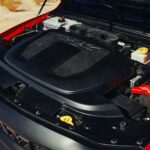That first scratch on a brand-new car? It’s a real downer. Luckily, you don’t always need a costly trip to the body shop for minor paint blemishes. The best car scratch removers can often handle these issues with a bit of effort and the right product.
We’ve put together a guide to the top car scratch removers available, testing them on various types of scratches and paint finishes. Whether it’s a light scratch from a jean button, paint transfer from a garage mishap, or parking lot souvenirs, these kits aim to make those imperfections disappear.
While they won’t fix deep gouges that reach the metal, for surface-level scratches and clear coat blemishes, these are excellent solutions. Keep in mind that professional detailing will always achieve a superior result with specialized tools and expertise. Think of these scratch removers as a convenient and effective DIY option for minor cosmetic fixes.
Editor’s Note: Updated for Price & Value insights on November 27, 2024.
Top Car Scratch Removers of 2024
Best Overall Car Scratch Remover
Meguiar’s Scratch Eraser Kit
- Type: Drill attachment kit
- Grit: Fine
- Safe For: All glossy paints, clear coats
- Price: $30
Pros
- User-friendly with any standard drill
- Fast and straightforward application
- Effective on scratches beyond hand buffing capability
Cons
- Not designed for deep scratches penetrating the clear coat
Michael Frank Reviews
The Meguiar’s Scratch Eraser Kit ($23) stands out for its simplicity. Unlike some kits, it skips multiple sandpaper grits and polishing stages, offering a single polish level. While this means it’s less aggressive on deeper clear coat damage, it simplifies the process considerably. Just clean the area, apply the compound to the drill sponge, and buff at medium speed.
Its strength lies in tackling scratches that hand application can’t handle, often resolving issues in minutes. It excelled at removing fine, hairline scratches. The drill-based application also allows for quicker work over larger areas compared to manual methods.
We tested it across various vehicles, including a vintage MG, a VW, a Honda, and even a tractor, with consistently positive results. The 4-ounce bottle provides ample product for multiple applications.
However, considering the minimal price difference to the 3M kit, the latter might be preferable for deeper scratches due to its extra-fine sandpaper and two-step buffing process.
Drill use, while efficient, has limitations. Reaching tight corners can be tricky, and over-buffing edges is a risk. Exercise caution, use slow, controlled movements, and avoid excessive pressure – let the product do its job.
A minor improvement for the Meguiar’s Scratch Eraser Kit would be a detachable sponge for easier cleaning, similar to the 3M system. Despite this, it offers excellent value and impressive scratch removal results.
Best Value Car Scratch Remover
Shine Armor Revive Scratch Repair
- Type: Formula
- Grit: N/A
- Safe For: All glossy paints, clear coats
- Price: $8
Pros
- Simple hand application with a microfiber towel
- Easy and quick to use
- Effectively removes swirl marks and fingernail scratches
Cons
- Not effective on deeper scratches
- No drill attachment included
Michael Frank Reviews
Shine Armor Revive Scratch Repair ($8) excels at addressing common swirl marks from car washes and light fingernail scratches around door handles. Like other hand-applied polishes we tested, the process is straightforward: ensure a clean, cool, and dry surface, apply a small amount to a microfiber towel, and rub with medium to firm pressure.
We were consistently impressed with its performance. It effectively removed surface scratches from clear coats on multiple vehicles. Even on older, less-than-perfect paint, like on a Honda, the restoration was noticeable.
A friend, after seeing the results on his VW door handle with fingernail scratches, used it across his entire car. (Note: it won’t fix deep rock chips down to bare metal on the hood’s edge.)
Another advantage of Shine Armor Revive Scratch Repair is its minimal residue. Polishing is clean, leaving virtually no leftover product. Many competitors required significant buffing to remove compound residue, which could sometimes create new swirl marks.
Best Car Scratch Remover for Professional-Like Results
3M Scratch Removal System
- Type: Drill attachment kit
- Grit: 3,000
- Safe for: All glossy paints, clear coats
- Price: $30
Pros
- Effective at removing paint transfer from door dings
- Best for deeper clear coat scratches
- Reduces scratches extending into the base coat
- Less labor-intensive than manual rubbing
Cons
- Requires patience for optimal results
- Polishing compounds come in non-resealable pouches
Michael Frank Reviews
For deeper scratch removal, the 3M Scratch Removal System ($30) outperformed all others tested. However, it’s a more involved process, particularly step one: sanding. Careless sanding can cause damage, so proceed cautiously. The initial sanding stage aims to level the scratch within the clear coat, which will make the sanded area appear dull.
Next, attach the compounding pad to your drill, apply rubbing compound, and work the area with overlapping motions until the scratch is minimized. Wipe away residue with a clean cloth.
Then, switch to the polishing pad and polishing compound, repeating the process to restore shine.
Depending on scratch severity, the entire process can take 30 minutes or longer. Despite the time, the system’s effectiveness is undeniable, even if it’s overkill for minor fingernail scratches or car wash swirl marks.
Testing involved various scratches on multiple cars, including paint transfer from door and bumper contacts. These paint transfers sanded off easily. Underlying scratches, some through the clear coat and others deeper, showed significant improvement, with minor scuffs often disappearing completely after sanding.
Downsides include the higher cost compared to simple compounds, the need for a drill, and limited access in tight areas. Buffing too aggressively on edges can also damage the clear coat. The compounds come in small, non-resealable pouches, which could lead to drying out. 3M sells replacement fluids separately, but resealable bottles would be a welcome improvement.
Notably, the 3M Scratch Removal System effectively addressed scratches that hand-applied compounds couldn’t touch, often removing most or all imperfections. This is a major advantage for blemishes you can feel with a fingernail.
Best Car Scratch Remover for Hand Buffing
Formula 1 Scratch Out
- Type: Formula
- Grit: N/A
- Safe For: All glossy paints, clear coats
- Price: $12
Pros
- Easy hand application with a microfiber towel
- Simple to use
- Effective on swirl marks and some deeper scratches
Cons
- Low viscosity can make application slightly messy
- Temperature sensitive
Michael Frank Reviews
Formula 1 Scratch Out ($12) application differs slightly. Similar to car wax, it’s buffed on, allowed to haze, and then polished off. This leaves a dusty residue, easily removed with a fresh microfiber towel.
In cooler conditions, it’s easy to use. However, despite shaking, its thin consistency is more like a milkshake than a thick polish, requiring careful dispensing.
It’s also more temperature-sensitive than other products. Avoid application on hot cars or those parked in the sun, as it becomes goopy and difficult to work with.
Despite these quirks, Formula 1 Scratch Out is effective. On larger scuffed or dull areas, it delivered excellent, wax-like results, but with enhanced scratch removal. It polished away microfine scratches deeper than wax alone can handle. Its thinner consistency also makes it easier to apply and polish larger areas.
The only drawback is the dusty residue, but the results are worth the extra wipe-down.
Best of the Rest
Carfidant Scratch and Swirl Remover
- Type: Formula
- Grit: N/A
- Safe For: All glossy paints, clear coat
- Price: $37
Pros
- Works on very minor scratches
- Simple application
Cons
- Less effective than alternatives
Michael Frank Reviews
The Carfidant Scratch and Swirl Remover ($13) performed decently on fine fingernail scratches, but not as effectively as our top recommendations. The included applicator sponge, being very soft, likely aims to prevent over-buffing and damage. Gentle, diligent work can improve very minor blemishes, but Carfidant was less effective, even with multiple attempts.
In one test, a scratch not fully removed by Carfidant was significantly improved to near invisibility with Shine Armor.
Frustrated with the Carfidant Scratch and Swirl Remover, we also tried applying it with a microfiber towel, which proved more effective, particularly on hairline scratches. This raises questions about the value of the included sponge if the product works better without it.
Given that the Meguiar’s kit is similarly priced and more effective, even compared to hand-applied options, we confidently recommend alternatives from our list.
Best Car Scratch Removers Comparison Table
| Car Scratch Remover | Price | Type | Grit | Safe For |
|---|---|---|---|---|
| Meguiar’s Scratch Eraser Kit | $30 | Drill attachment kit | Fine | All glossy paint, clear coats |
| Shine Armor Revive Scratch Repair | $8 | Formula | N/A | All glossy paint, clear coats |
| 3M Scratch Removal System | $30 | Drill attachment kit | 3,000 | All glossy paint, clear coats |
| Formula 1 Scratch Out | $12 | Formula | N/A | All glossy paint, clear coats |
| Carfidant Scratch and Swirl Remover | $37 | Formula | N/A | All glossy paint, clear coat |
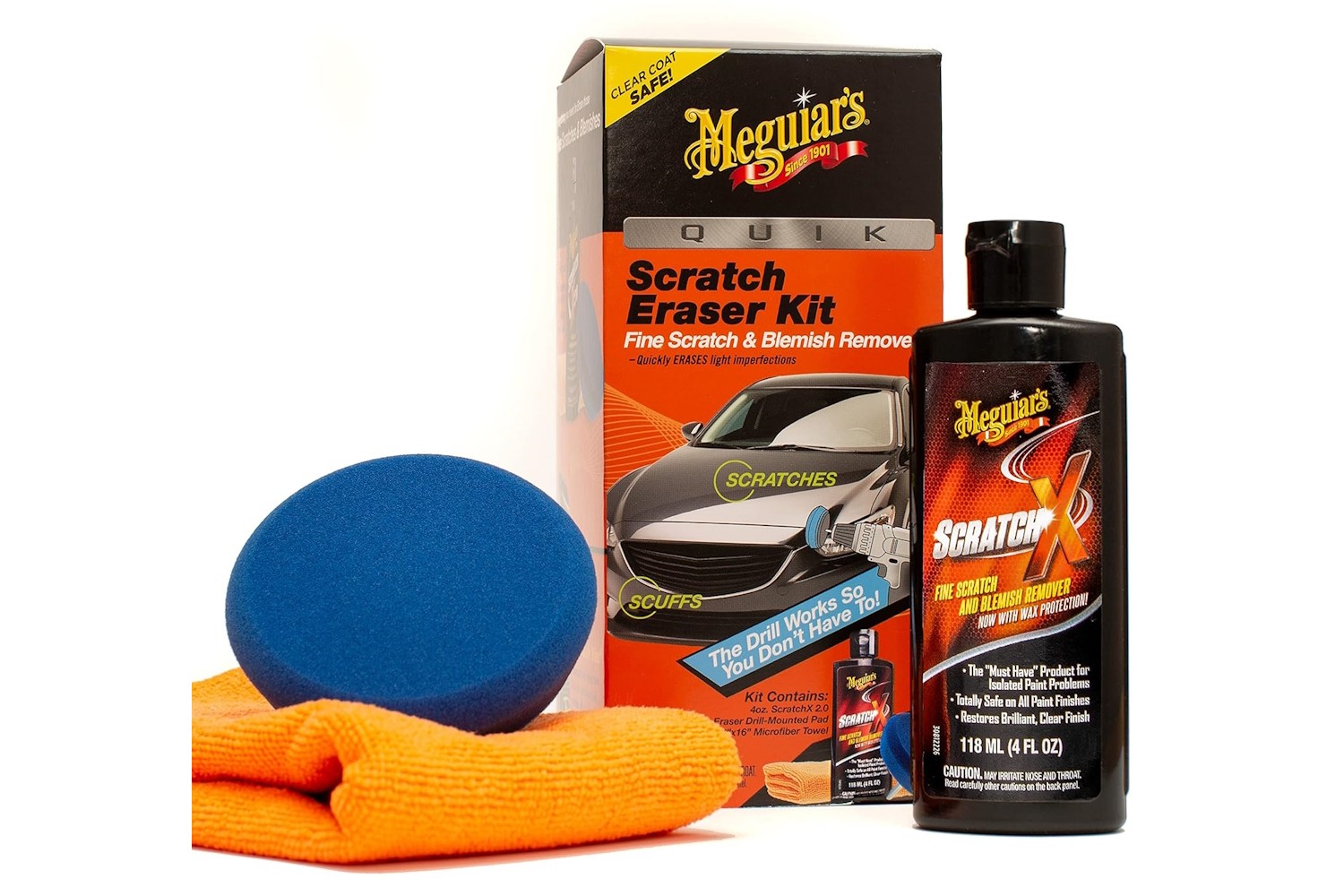
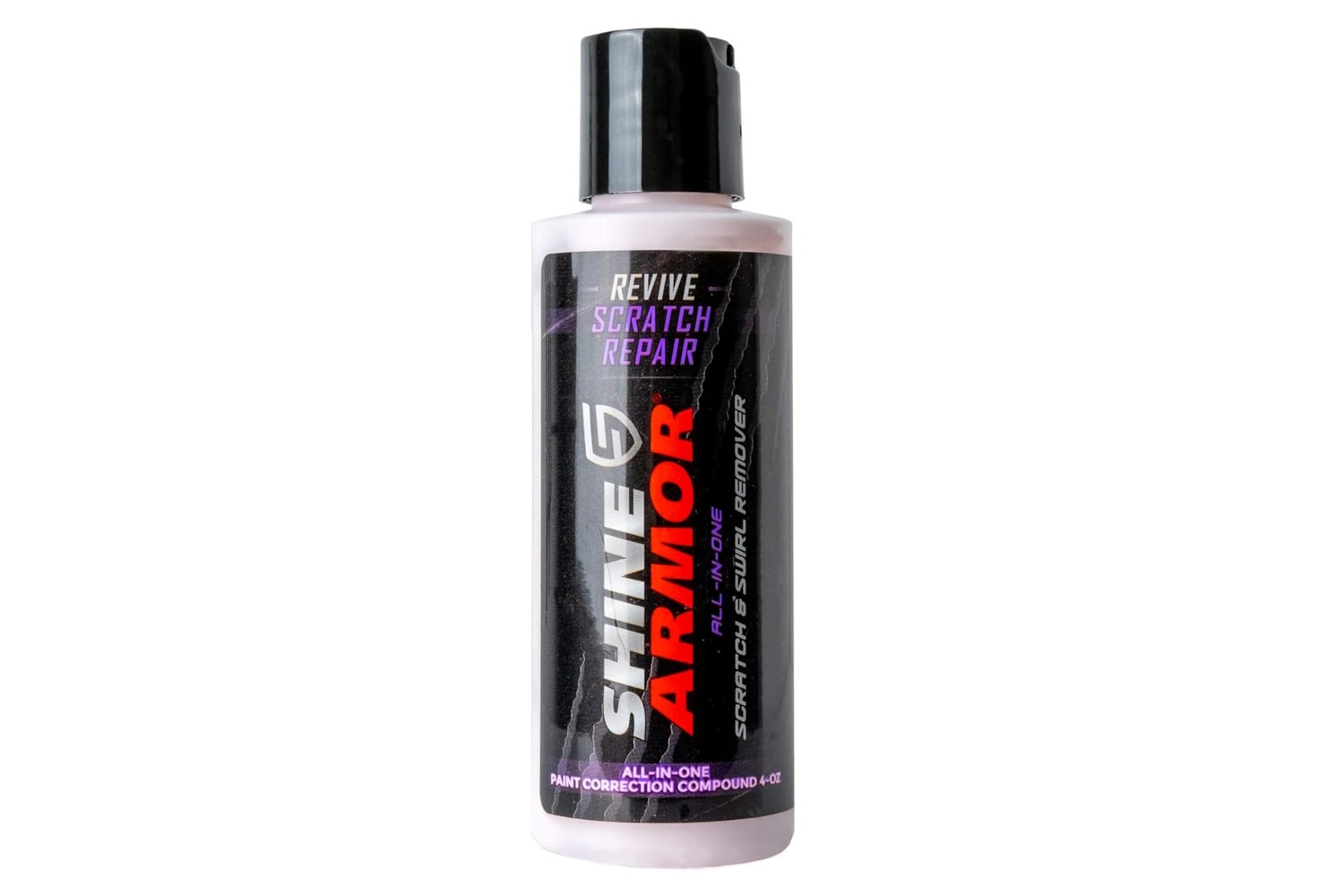
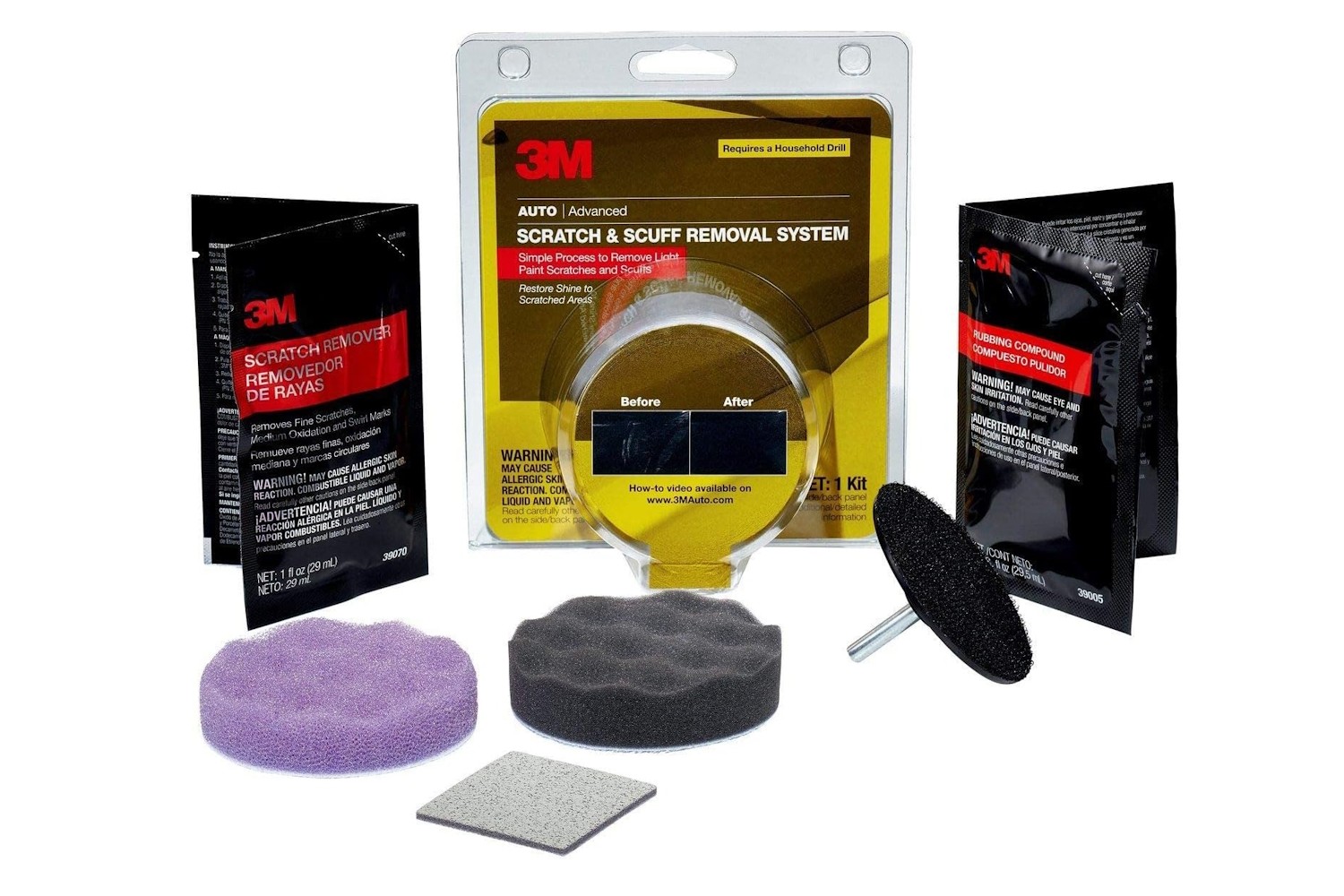
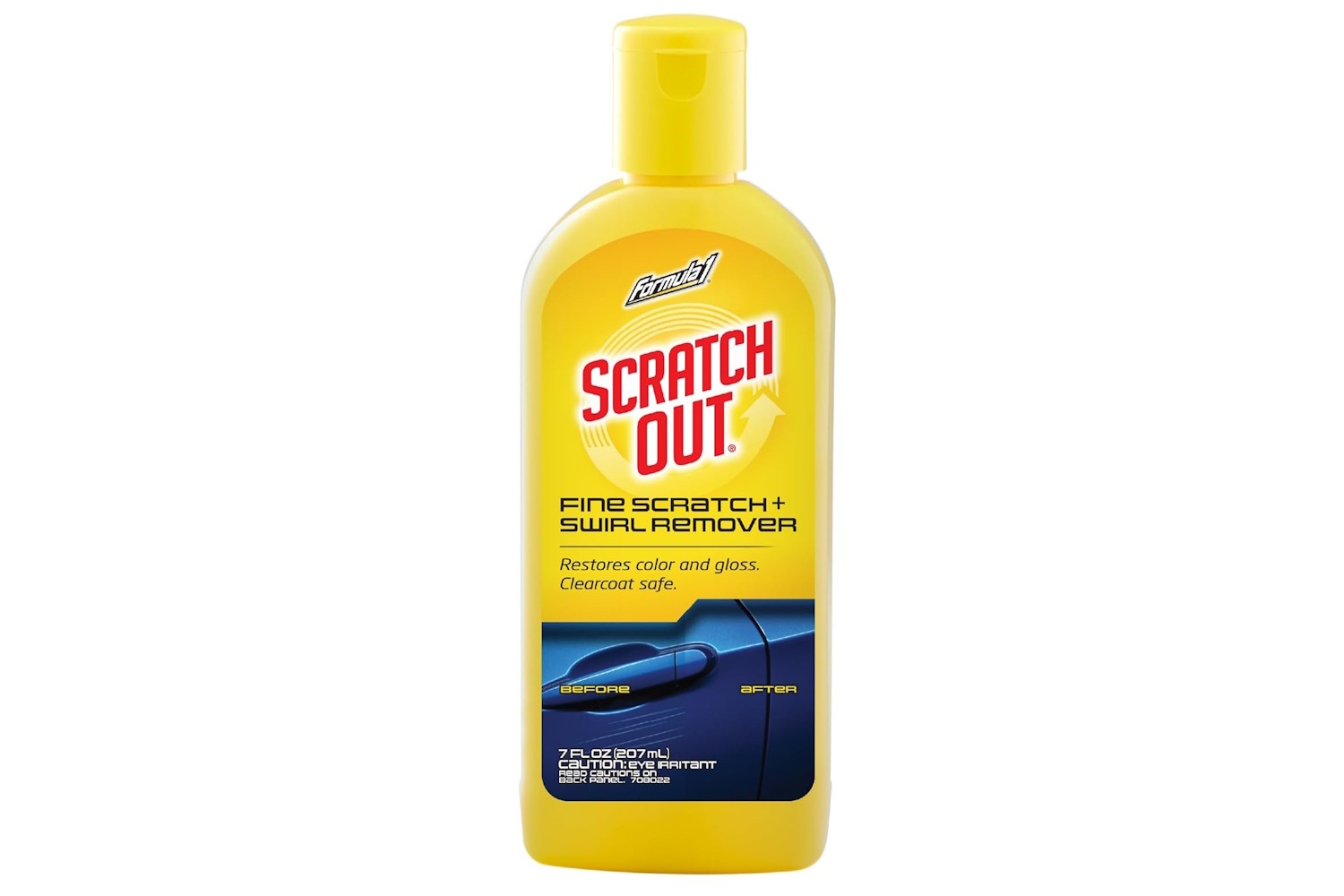
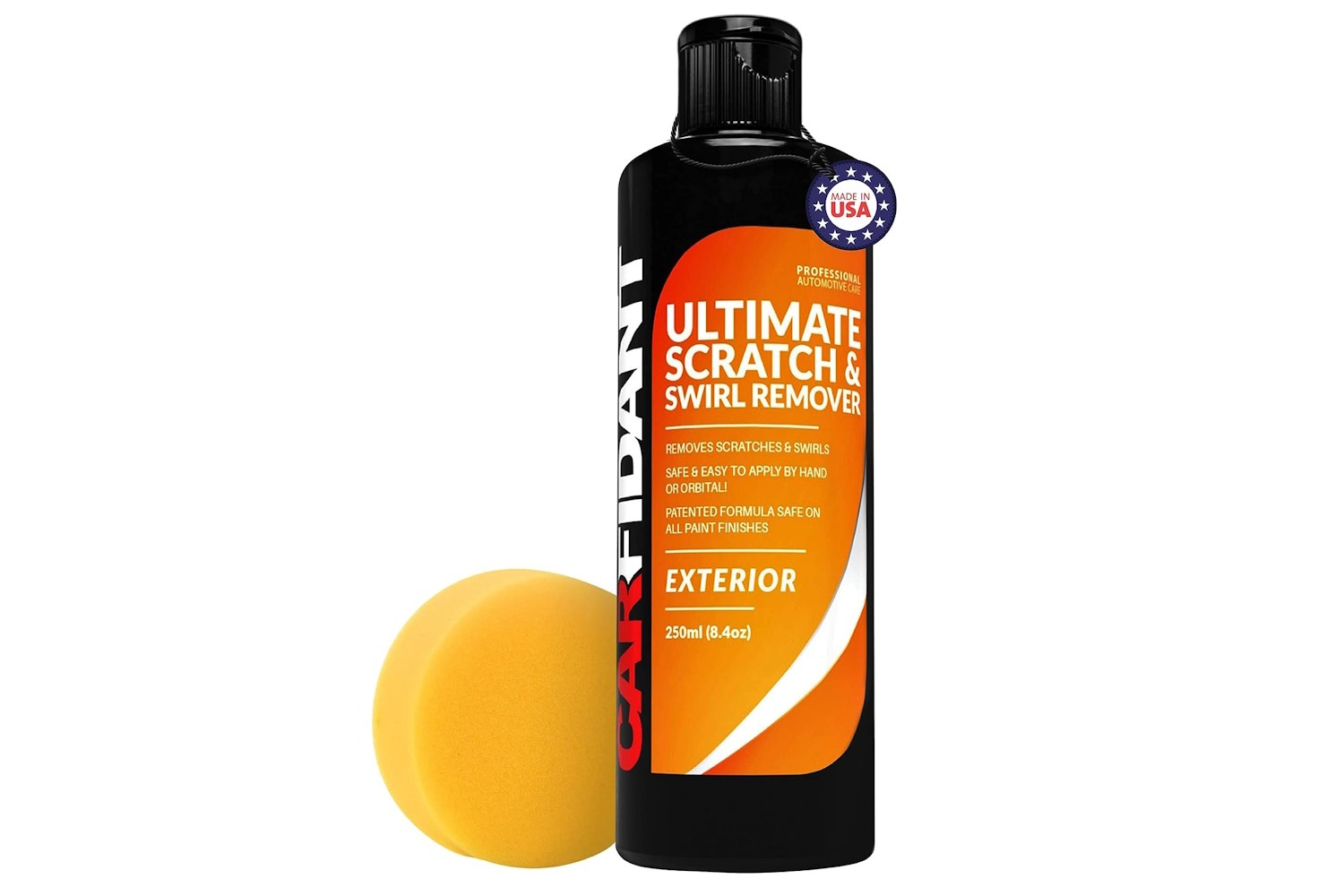
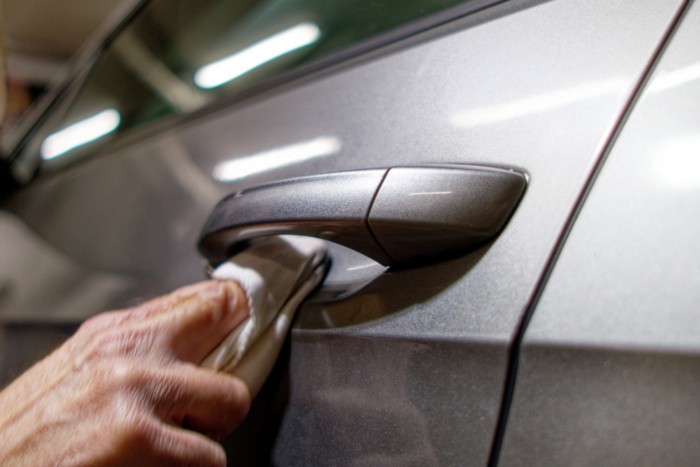
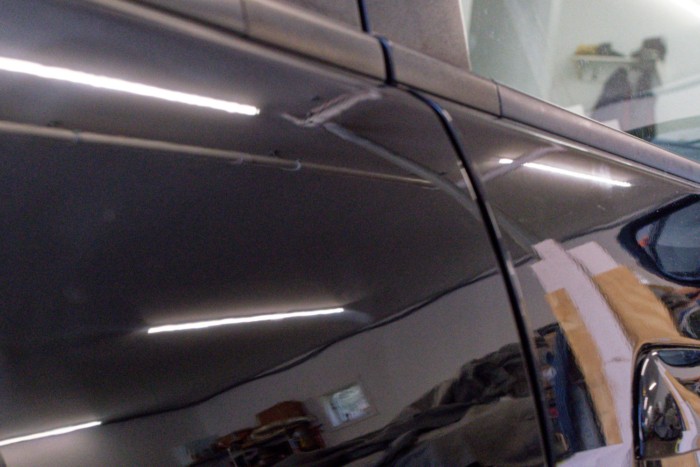
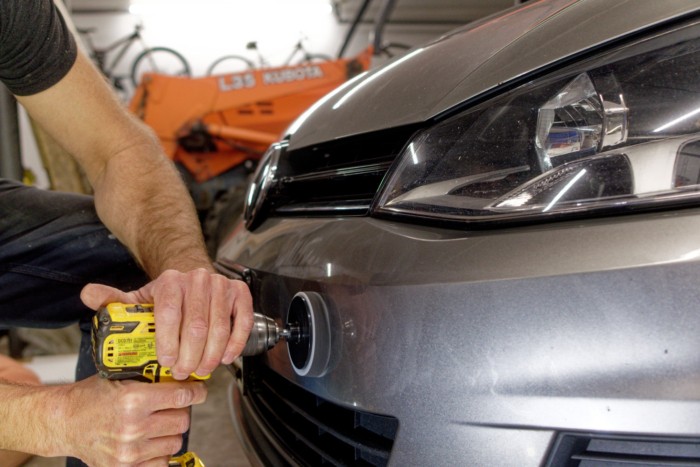
How We Tested the Best Car Scratch Remover Kits
Our Expert Tester
Michael Frank, our lead tester, has extensive experience with car paint care on his diverse collection of vehicles, both classic and modern. His passion for automotive restoration and detailing makes him a firm believer in the transformative power of polishing compounds to rejuvenate vehicle paint.
Our Testing Process
We evaluated scratch removers on a range of paint types and vehicle surfaces, from vintage Honda motorcycles and Volvo classics to modern cars with metallic finishes and plastic bumpers. A quality scratch remover should perform consistently across different materials. Modern vehicles with complex body lines and sharp angles present polishing challenges, demanding careful pressure control.
Testing focused on ease of use, speed of results, process complexity, and user-friendliness. We also assessed the risk of over-polishing and damaging the clear coat. Fortunately, all tested products proved relatively user-friendly.
The consistent surprise was the overall effectiveness of these products. Even heavily weathered paint could be significantly improved with minimal effort, making scratch removal a readily accessible paint care solution.
Hand-application scratch removers are ideal for eliminating smaller scratches; (photo/Michael Frank)
Buyer’s Guide: How to Choose a Car Scratch Remover
Ease of use often correlates with effectiveness, depending on the scratch type. Hand-applied products are suitable for minor blemishes like hairline scratches, swirl marks from car washes, fingernail marks, and light abrasions. For minor key scratches around door locks, these are ideal.
For deeper scratches from rock impacts on bumpers or hoods – those you can feel with a fingernail, but haven’t penetrated the plastic or metal – drill-buffer kits are recommended.
They are more effective at blending these deeper scratches and less physically demanding than prolonged manual rubbing.
Kinds of Scratch Removers
Our testing included two main types: hand-applied rub-on formulas and drill-operated buffers. For more advanced paint correction, consider orbital polishers. These offer benefits like larger pad sizes and independent speed controls, offering more precise control than a drill trigger. The design also facilitates easier pressure application on horizontal and vertical car panels.
Orbital polishers start around $40, making them a worthwhile investment for serious car enthusiasts. These can be used with polishing fluids like Turtle Wax Scratch Repair & Renew, which we found effective with drill-based pads.
However, even drill-based pads in our test proved remarkably effective, especially the 3M system with its light sanding and two-stage polishing process.
This approach mirrors professional detailing techniques, suggesting you don’t need to invest heavily unless you are highly meticulous about paint finish.
How to Use Car Scratch Removers
No Sun, No Heat
Working conditions are crucial. Never apply scratch remover in direct sunlight or on hot paint, even in shade. Heat alters the compound’s chemistry, causing it to dry too quickly. This turns a wet-sanding process into a dry one, potentially damaging the clear coat.
(Based on experience: polishing in direct sunlight is overly abrasive, and the compound becomes difficult to manage.)
What They Don’t Do
Polishers work by gently removing a micro-layer of clear coat and paint pigment, then polishing the leveled surface. The polishing agent helps restore shine.
However, no product can magically restore paint missing due to deep rock chips reaching plastic or metal. These require professional touch-up paint and repair.
Wash First
Always work on a clean, dry surface, unless instructions specify otherwise (like 3M’s slightly damp sanding). For heavily soiled or neglected paint, consider using a clay bar after washing and drying to remove embedded contaminants before scratch removal.
Choose Your Polisher
Hand-applied scratch removers excel on micro-swirls. However, drill buffers are superior for removing scuffs and paint transfer from minor parking incidents.
For scratches not penetrating the color coat, these tools can effectively address blemishes that might otherwise require professional detailing.
Sanding and drill-mounted scratch removers can leave cars looking like new; (photo/Michael Frank)
Go Slowly
All tested polishers worked best with light, overlapping passes (up-down, side-to-side) and minimal pressure. Regularly pause to assess progress and wipe away residue. Multiple light passes yield better results. The process of removing scratches and restoring shine is surprisingly rewarding.
Price & Value
Budget
For newer vehicles with minor scratches like fingernail marks, starting with a budget-friendly compound is sensible. The effectiveness of even inexpensive options is impressive. For instance, Formula 1 Scratch Out ($12), similar to car wax, easily removes micro-scratches and even some slightly deeper imperfections that wax alone cannot handle.
Drill-mounted scratch remover kits are well-suited for deeper scratches and nicks; (photo/Michael Frank)
Premium
For more significant scuffs or paint transfer, consider a kit like the 3M Scratch Removal System ($30). This includes drill-compatible sanding pads and scratch remover fluid, effectively removing paint transfer and addressing minor scuffs through sanding.
Frequently Asked Questions
What is the best product to remove scratches from cars?
For light scratches and dings, drill-mounted orbital polishers with a quality polishing fluid are most effective. We recommend the 3M Scratch Removal System and Meguiar’s Scratch Eraser Kit as excellent all-in-one kits proven in our tests.
Do car scratch removers really work?
Yes, they are effective for scratches in the clear coat and even light color coat damage. However, they cannot replace missing paint. They can significantly reduce the appearance of scratches, even if complete repair isn’t always possible.
How do I prevent scratches and swirl marks from forming in my paint?
Wash and dry your car using clean microfiber towels and chamois. Rinse off loose dirt first, working from the top down to avoid dragging grime into the paint. Use a high-pressure hose to remove bulk dirt, and avoid waxing in direct sunlight.
What is the best way to remove deep scratches from a car?
Scratches penetrating the pigment or primer layer require professional attention for touch-up paint. Blending these perfectly is challenging. However, drill-based polishers, particularly the 3M system with light sanding, can significantly improve minor scratches that slightly reach the color layer.
